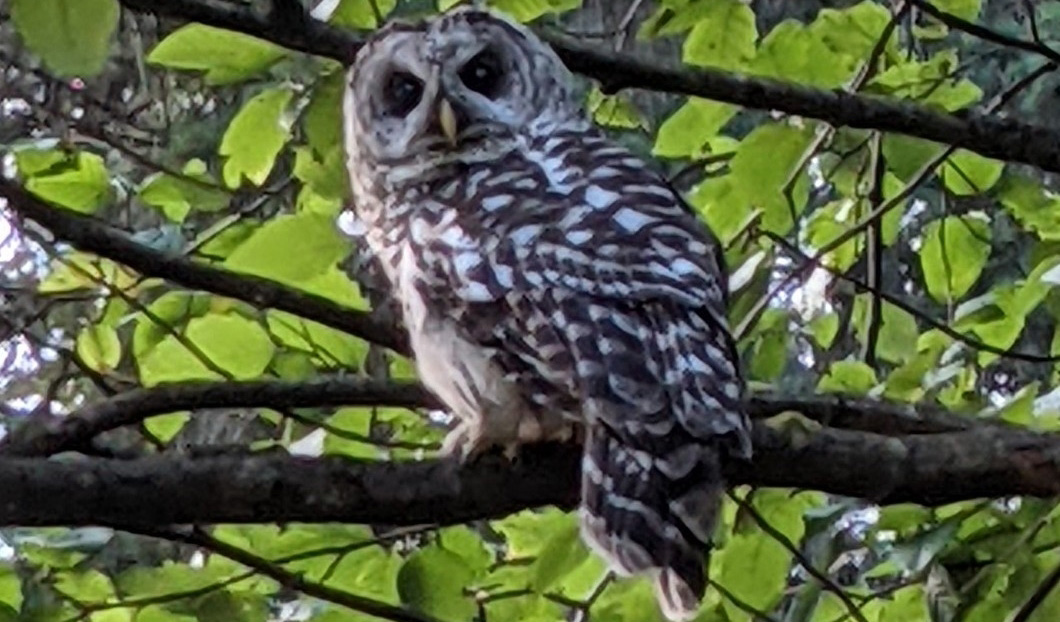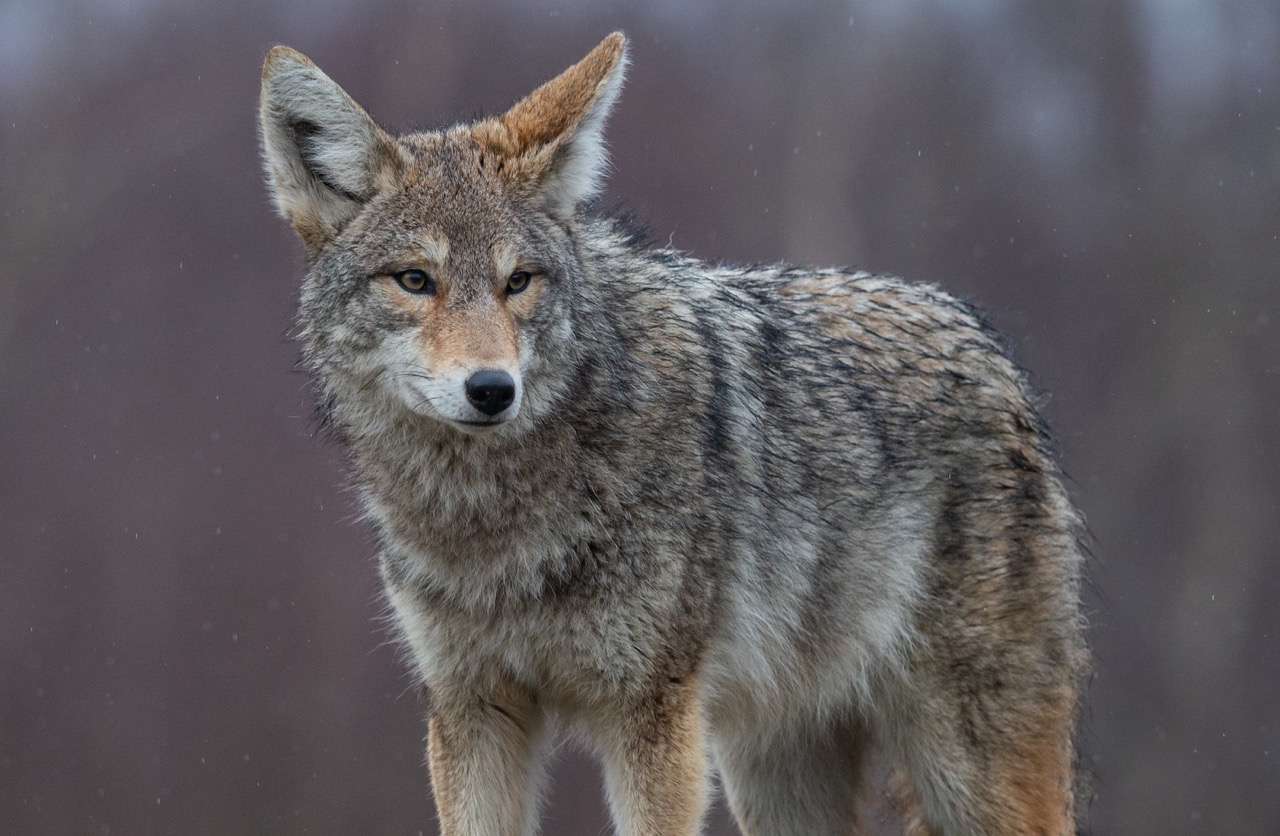Our neighbourhoods and surrounding environment are packed with wildlife, from owls to seals, and squirrels to ladybugs.
There is so much to learn about these nearby creatures, and one campus resident also happens to be an expert in the field. Matthew Mitchell, Assistant Professor with UBC’s faculty of Forestry and faculty of Land and Food Systems is an applied landscape ecologist who focuses on “how landscape structure and human actions impact biodiversity and multiple ecosystem services.”
Along with his team of researchers, he has been monitoring biodiversity at the UBC Farm since 2019, using camera traps for small mammals, acoustic monitoring for birds and bats, and fieldwork for bumble bees and earthworms.
Here are just a few of the animals you might see in our neighbourhood.
Squirrels
Squirrels are everywhere on campus, but how much do we really know about these critters? Two species of squirrels can be found in the area: the native Douglas Squirrel, which likes forested habitats and builds large, round nests in the trees. There’s also the Eastern Grey Squirrel, which historically was not present in our area. It has an excellent sense of smell which helps them locate food that they’ve hidden away.
Mitchell points out that “the eastern grey has two colour morphs, grey and black. Some people think the grey and black squirrels are different species but they are actually the same.”
Coyotes
Several coyotes are known to live in the area, and you might see them on or near campus. They tend to keep to themselves and are most active at night, though they can be spotted around dawn and dusk.
While there is a risk a pet or child could be attacked by a coyote, that risk is very small. Studies show that pets usually make up less than 2 per cent of a coyote’s diet in urban areas.
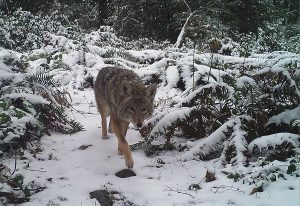
“Always supervise your children or pets, especially in areas where coyotes might be present and educate children how to respond to coyotes – go inside a building, make themselves big, yell for help, and don’t run,” says Mitchell.
He adds that adults should also “get in the habit of hazing or scaring coyotes away from populated areas if they see them.”
Raccoons
Have you ever seen grass dug up and overturned around the neighbourhood? It’s probably racoons. Raccoons dig up grass in search of food, mostly grubs, which is a common food source. There is evidence of this digging activity in the grass verges near Ross Drive and 16th Ave.
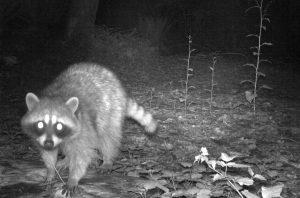
Raccoons are excellent climbers and swimmers, allowing them to navigate various terrains. It is advised that if you see a raccoon prowling around at night, keep your distance.
The birds …
According to a 2021 study by UBC’s Social Ecological Economic Development Studies (SEEDS) Sustainability Program, there are 121 documented bird species on campus, both resident and migrating. Common ones include bald eagles, crows, finches, hawks, hummingbirds, owls, robins, sparrows, and woodpeckers.
Crows are quite interesting. They use tools, can remember the faces of people they like or don’t like, and there is some evidence that they are self-aware, making them one of the most intelligent creatures in the animal kingdom and considered on par with chimpanzees.
The SEEDS “UBC Bird Backgrounder” says, “Birds are important because they help to regulate insect and rodent populations and contribute to pollination and seed dispersal.”
… and the bees (and the bats!)
Besides the big critters, there are many smaller animals nearby that we don’t always notice. These include bumblebees and other native pollinators, including moths, spiders, snakes, and countless insects, from ladybugs to dragonflies to flying ants.
Bumblebees are super-pollinators distinctive for their fuzzy, pile-covered bodies and bold colors, which helps them ward off predators.
Among our flying neighbours, what’s an animal that we don’t often get a chance to see?
“My personal favourite might be the bats we have on campus,” says Mitchell. “We often don’t realize they are around since they use ultrasonic sound and only fly at night.”
He says there is a large roost on campus of around 250-300 bats, and all of the local bats are insectivores (meaning they only eat insects), are small with a range in weight from five to 15 grams, and they don’t bother people.
Deer
Campus and the university neighbourhoods are surrounded by lush forest and greenery which is full of all sorts of animals, so why don’t we see more deer?
Part of the reason is geography. Deer have a hard time getting to Point Grey peninsula because it is surrounded by a dense urban area, the Fraser River, and the Pacific Ocean.
Despite the geographic challenges, they have made it here before, says Mitchell.
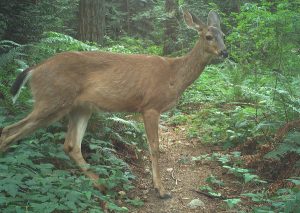
“A pregnant doe arrived in May 2023 and gave birth to a fawn shortly after. The deer spent a couple of years at the farm feasting on all of the organic produce,” he says.
Then tragedy struck, as it’s believed both deer were likely struck by cars. “I believe these were the first deer on campus for the last 25 years,” he says.
Co-existing safely with wildlife
Some human behaviors can harm wildlife, so Mitchell along with many other wildlife experts have some tips for keeping us, and our animal neighbours, safe.
Never feed wild animals – no matter how cute they are – so that they do not become dependent on humans for food. A wild animal that becomes habituated to being fed can pose risks to humans through biting and the transmission of diseases.
Keep cats indoors. Urban cats kill large numbers of birds, small mammals, and reptiles/amphibians each year, which has negative impacts on biodiversity. Indoor cats also live longer.
Place bird-friendly decals on windows. The abundant and diverse bird population on campus can put them in close contact with buildings and windows, leading to significant bird strikes. Varied thrushes on campus are at particularly high risk. According to a 2021 study led by Krista L. De Groot, about 10,000 birds die annually from building collisions at UBC.
Planting pollinator-friendly plant species supports native pollinator communities, such as mason bees and butterflies.
PERMENIA REA IS A GRADE 8 STUDENT AT IDEAL MINI SCHOOL.
